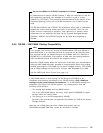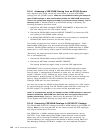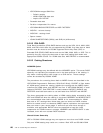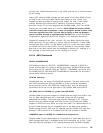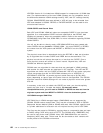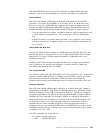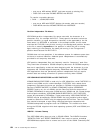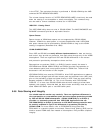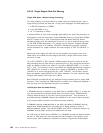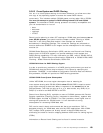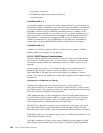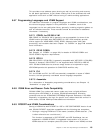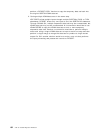in the VTOC. This equivalent function is performed in OS/390 VSAM by the AMS
command ALTER REMOVEVOLUMES.
The volume cleanup function of ″ALTER REMOVEVOLUMES″ should only be used
when the catalog is not accessible or totally unavailable. This command may
also be used to remove candidate volumes as in VSE/VSAM.
IKQVCHK - Catalog Check
This VSE/VSAM utility does not exist in OS/390 VSAM. The AMS DIAGNOSE and
EXAMINE commands provide an equivalent function.
Space Classes
Space classes of VSAM data spaces are not supported by OS/390 VSAM.
However, VSAM files, data spaces, or volumes established under VSE/VSAM
with space classes can be processed by OS/390 VSAM as long as the VSAM
catalog is supported (December 31st 1999).
VSAM SHAREOPTIONS
Since VSE and OS/390 use
totally different implementations
for data set sharing
and control, they provide no protection from each other through any of the VSAM
shareoptions. There are significant VSE and OS/390 differences in the access
and protection provided by shareoptions three and four.
Shareoptions one and two (SHR(1) or SHR(2)) function exactly the same in
VSE/VSAM and OS/390 VSAM. SHR(3) and SHR(4) provide cross-partition (or
cross-address space) and cross-system access to VSAM files. These will be
discussed in the next section of this chapter.
VSE/VSAM SHR(4) was used by CICS/VSE to allow CICS applications to update a
VSAM data set through both the base cluster path and alternate index (AIX) path,
prior to the availability of data set name sharing in VSE. Data set name sharing
became available in VSE/ESA 1.3. This is not necessary with CICS/OS/390.
CICS/OS 1.7 or later uses OS/390 VSAM data set name sharing to allow these
updates, with integrity. Note that both the base cluster and AIX(s) must be in the
same VSAM LSR buffer pool or use NSR buffer pools.
5.6.6 Data Sharing and Integrity
You should read this section very carefully. There are significant differences in
the cross-partition or cross-address space and cross-system protection provided
by VSE and OS/390 VSAM shareoptions. OS/390 VSAM SHR(4 x) or SHR(4 4)
provides less automatic protection than VSE/VSAM. Applications that use
VSE/VSAM SHR(4) or SHR(4 4) protection or VSE DASD sharing protection must
be carefully evaluated in light of the differences in protection provided by
OS/390 VSAM.
For more details, refer to
DFSMS/MVS Using Data Sets
,
SC26-4922. In a parallel sysplex environment, Record Level Sharing (RLS) can be
used to access VSAM data sets instead of shareoptions. RLS provides complete
integrity.
Chapter 5. Disk and Tape Storage Considerations 125



